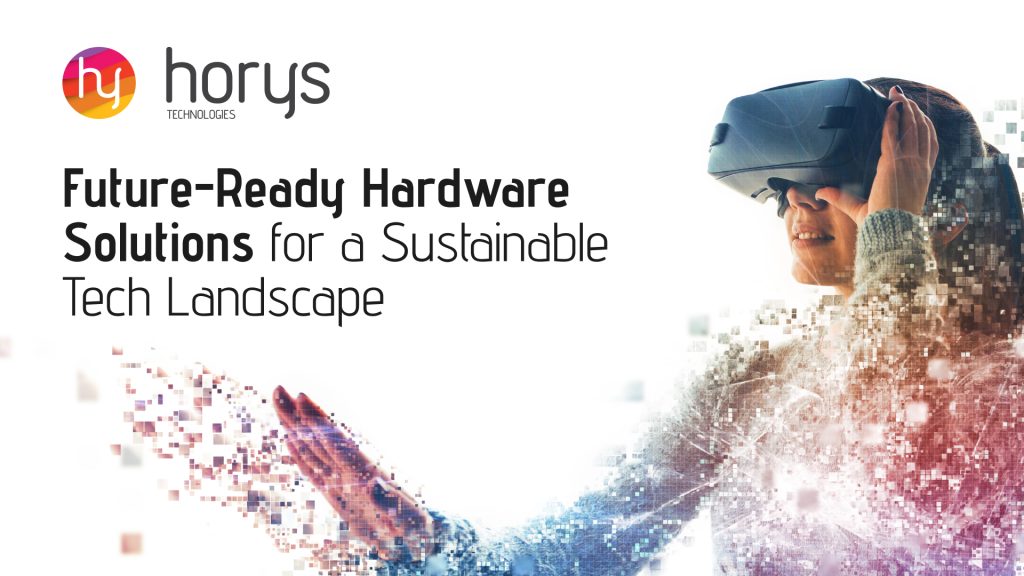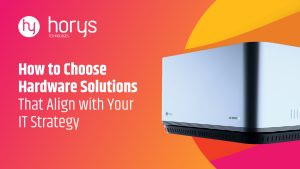The global push for sustainability has reached the technology sector, where the environmental impact of hardware is increasingly under scrutiny. With a growing demand for efficiency, modularity, and eco-friendliness, businesses and consumers are turning to future-ready hardware solutions that meet the needs of a greener tech landscape. These innovations not only aim to reduce energy consumption and waste but also align with broader goals of achieving net-zero carbon emissions and fostering a circular economy.
In this comprehensive guide, we delve into the key trends, technologies, and challenges shaping the future of sustainable hardware, offering actionable insights for businesses and individuals committed to a sustainable tech future.
Future-Ready Hardware Solutions
As technology becomes an integral part of our daily lives, its environmental footprint is growing rapidly. Hardware manufacturing, usage, and disposal contribute significantly to carbon emissions, resource depletion, and electronic waste (e-waste). According to the United Nations, over 53.6 million metric tons of e-waste were generated globally in 2019, a number projected to grow exponentially.
To combat this crisis, the tech industry is shifting its focus toward sustainable hardware solutions. These include energy-efficient chips, modular devices, and renewable energy integration, aimed at reducing environmental impact while maintaining technological innovation.
1. Energy-Efficient Hardware Solutions
Energy efficiency lies at the core of sustainable hardware, as devices and infrastructure consume vast amounts of energy during operation.
Key Innovations
- Low-Power Chips:
- Processors like Apple’s M1 and ARM Cortex-A deliver high performance while consuming minimal power.
- Benefits: Extended battery life, reduced energy bills, and lower carbon footprints.
- Energy-Efficient Data Centers:
- Data centers consume around 1% of the world’s total electricity. Companies like Google and Microsoft are adopting carbon-neutral solutions such as renewable energy-powered data centers and efficient cooling systems.
- Examples: Google’s DeepMind AI reduces cooling energy by 40%.
- Tools for Energy Optimization:
- Technologies like Intel Speed Shift dynamically adjust processing power based on workload demands, optimizing energy use.
2. Modular and Repairable Hardware
Traditional hardware often becomes obsolete quickly, contributing to e-waste. Modular and repairable designs offer a sustainable alternative by extending device lifespans.
Benefits
- Reduced Waste:
- Replaceable parts minimize the need to discard entire devices.
- Cost Savings:
- Users can upgrade specific components instead of purchasing new hardware.
Examples
- Fairphone: A modular smartphone that allows users to replace parts like the camera or battery.
- Framework Laptop: A repairable laptop designed for easy upgrades and part replacements.
3. Renewable Energy Integration in Hardware
Renewable energy-powered hardware enables off-grid operations while reducing reliance on fossil fuels.
Applications
- Solar-Powered IoT Devices:
- Used in agriculture, weather monitoring, and remote healthcare.
- Examples: Solar panels integrated with IoT sensors for irrigation systems.
- Renewable Energy Data Centers:
- Companies like Amazon Web Services use solar and wind power to run data centers sustainably.
4. Circular Economy and Hardware Recycling
The circular economy emphasizes reducing waste by reusing and recycling materials.
Key Components
- Recycling Programs:
- Initiatives like Apple’s Daisy Robot disassemble devices to recover valuable materials such as rare earth metals.
- Products Made from Recycled Materials:
- HP’s Dragonfly Elite laptops are made from recycled plastics and metals.
5. IoT for Environmental Monitoring
IoT devices play a pivotal role in tracking and managing environmental resources efficiently.
Applications
- Smart Sensors for Pollution Control:
- Devices like Bosch IoT Sensors monitor air quality and carbon emissions.
- IoT in Energy Management:
- Smart grids optimize electricity distribution, reducing energy waste.
6. Cooling and Energy Solutions for Data Centers
Cooling is one of the largest energy expenses for data centers.
Key Solutions
- Liquid Cooling:
- CoolIT Systems reduce energy consumption by replacing traditional air cooling with liquid-based solutions.
- Immersion Cooling:
- Fully submerges hardware in non-conductive liquids, maximizing efficiency.
7. Biodegradable and Organic Electronics
Biodegradable electronics decompose naturally, reducing e-waste and environmental harm.
Applications
- Consumer Electronics: Biodegradable cases and circuit boards for smartphones and wearables.
- Medical Devices: Temporary implants that dissolve after completing their function.
8. Cloud and Edge Computing for Sustainability
Cloud and edge computing reduce the environmental impact of data processing.
Benefits
- Cloud Computing:
- Centralized servers optimize energy usage, lowering overall consumption.
- Edge Computing:
- Processes data locally, reducing energy costs associated with data transfer.
9. Energy Harvesting Hardware Solutions
Energy harvesting hardware generates power from natural sources like movement, heat, or vibrations.
Key Technologies
- Kinetic Energy Devices:
- Examples: Self-powered wearables such as smartwatches.
- Thermoelectric Generators:
- Convert heat into electricity for industrial applications.
10. Government Policies and Industry Standards
Governments and industries are setting standards for greener technology.
Examples
- EPEAT Certification: Ensures devices meet stringent environmental criteria.
- RoHS Compliance: Restricts hazardous substances in electronic products.
11. Future Trends in Sustainable Hardware
- Bio-Inspired Designs: Mimicking natural processes for energy-efficient hardware.
- Quantum Computing: Dramatically reducing the energy required for computations.
- Carbon-Negative Manufacturing: Processes that absorb more CO₂ than they emit.
Conclusion
The journey toward a sustainable tech landscape depends heavily on future-ready hardware solutions. Innovations in energy efficiency, modularity, renewable energy integration, and recycling are paving the way for a greener future. As governments, businesses, and consumers embrace these technologies, we move closer to achieving a truly sustainable and tech-driven world.
About Horys
A premier hardware and software solutions company, Horys’ technology is on par with global standards. Its offerings include a variety of hardware products like smartphones, tablets, and computers. And software products include server hosting and management solutions.
Disclaimer: This article combines insights from both human expertise and AI technology to provide informational content. It is for informational purposes only and should not be interpreted as financial advice or a recommendation to invest. Virtual asset investments are inherently volatile and risky. Horys provides no guarantee of accuracy or completeness for the information herein. Independent research and professional advice are recommended before engaging in any investment activity. Horys bears no liability for investment decisions based on this article.



